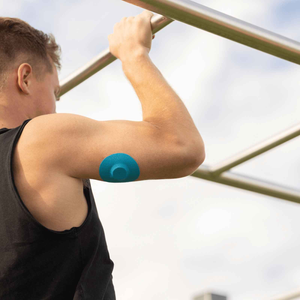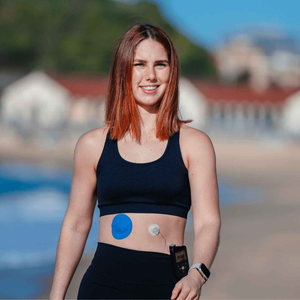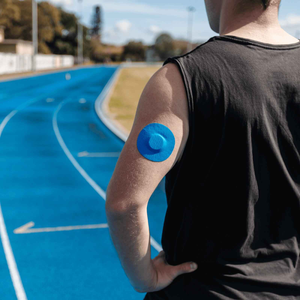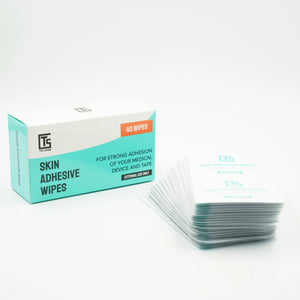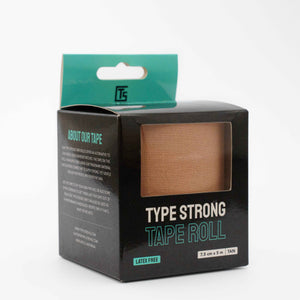Some days, it feels like diabetes doesn’t just live with you – it takes over your calendar. There’s the constant hum of your CGM alerts, the mental checklist before every meal, the reminder that your CGM patch is due for a change, and the quiet worry about what your numbers will look like later.
After a while, that mental load can get heavy. Really heavy. That’s when many people run into what’s often called diabetes burnout – when you feel emotionally and physically drained by the never-ending demands of your condition. It’s not laziness. It’s not neglect. It’s your mind and body telling you they’ve been on duty for too long.
If this sounds familiar, you’re far from alone – and you can get through it without letting your health slide.
What is diabetes burnout?
Diabetes burnout is more than just being tired of finger pricks or site changes. It’s when the emotional weight of managing your diabetes builds up to the point where you start switching off. That can mean skipping CGM checks, leaving your CGM patch on long after it starts lifting, or avoiding thinking about diabetes altogether.
The American Diabetes Association explains that diabetes burnout "Typically, the individual feels that despite their best efforts, their blood glucose levels are unpredictable and disappointing. People with diabetes describe it as feeling “detached” from their diabetes care, combined with a sense of “powerlessness.” . It’s common, it’s human, and it doesn’t mean you don’t care about your health – it means you’ve been running at full speed for too long.
Signs you might be experiencing diabetes burnout
|
Sign |
How it shows up day-to-day |
Why it matters |
|
Avoiding CGM checks |
Ignoring alerts or not scanning your device |
Missed data can delay important decisions |
|
Neglecting patch changes |
Wearing the same patch past its limit |
Risk of poor adhesion or inaccurate readings |
|
Irritability |
Feeling short-tempered about diabetes tasks |
Lowers motivation and increases stress |
|
Loss of motivation |
Skipping exercise or healthy meals |
Can affect glucose stability and mood |
|
Social withdrawal |
Avoiding outings to dodge CGM questions |
May lead to feeling isolated |
How to work through diabetes burnout
When you’re in diabetes burnout, even the basics can feel like a mountain. The key is to make your care lighter, simpler, and less emotionally draining.
1. Break care down into smaller wins
Instead of trying to “get back on track” in one go, focus on one easy step at a time.
- Start with proper skin prep before putting on your CGM patch so it stays secure and you’re not reapplying as often (see our guide).
- Use adhesive wipes to help each patch last its full wear time.
- Set a regular patch change day – fewer decisions mean less mental clutter.
Think of it like tidying one drawer instead of the whole house. Small wins build momentum.
2. Reduce decision fatigue with a simple system
Diabetes burnout often makes small decisions feel huge. Organising your supplies can take away that mental weight.
- Keep a CGM patch bundle stocked so you’re ready for quick changes without last-minute orders.
- Store everything – patches, wipes, sensors – in one spot so you’re not hunting for them.
- Keep a spare patch and sensor in your work bag or car for unexpected changes.
When everything’s ready, you don’t have to think – you just do.
3. Give your mind a breather too
It’s easy to focus only on numbers and supplies, but diabetes burnout has a big emotional side.
- Take a walk without checking your CGM every few minutes.
- Have a weekly check-in with yourself: How am I feeling about diabetes this week?
- Let a friend or family member know you’re in a burnout phase so they can help carry the load.
- If you need a boost, read about why your support matters – it can help you see that you’re not in this alone.

4. Remove physical discomfort from the equation
When your CGM patch is itchy, peeling, or irritating your skin, it can turn a small task into a big source of frustration. That frustration fuels diabetes burnout.
- Try hypoallergenic patch options to avoid reactions.
- Rotate your application sites so the same area isn’t always under pressure.
- Follow post-adhesive care tips to keep skin calm after patch removal.
Comfort might seem minor, but when you’re comfortable, your CGM routine feels less like a chore.
People also ask
- What are some tips for coping with diabetes burnout? Start small, organise your supplies, make time for mental health check-ins, and address CGM comfort issues to remove stress triggers.
- Does diabetes burnout affect blood sugar control? Yes – skipping checks or delaying changes can make glucose management harder.
- Can you prevent diabetes burnout? You can reduce the risk by keeping your care routine simple, using supportive tools like long-wearing patches, and taking breaks to recharge.
A relatable example
A CGM user once shared that during a particularly busy work season, they ignored most of their glucose alerts for over a week.
Their CGM patch was so loose it caught on clothing, but they didn’t have the energy to change it. Instead of tackling everything at once, they decided to make just one change: setting Sunday evening as their patch change time. They paired it with using adhesive wipes so it lasted the full week.
That one change reduced daily stress. With one less thing to worry about, their energy slowly returned, and so did their motivation to scan more regularly.
Final encouragement
If you’re feeling the weight of diabetes burnout, remember – it’s not a sign you’ve failed. It’s a sign you’ve been working hard for a long time. You can take small, realistic steps that make your care easier without letting your health slip.
Your CGM patch is there to support your life, not take over it. Simplify where you can, let others step in when you need them, and choose products that make wearing your CGM more comfortable. Burnout is temporary – and with patience, you can come out the other side feeling lighter, stronger, and ready to focus on what matters most.
